

A fire can break out anytime, anywhere. Sometimes, it can be too big to put out. But if you have a clear passageway to all emergency exit routes, you can save yourself and others. That’s why you need to be aware of the categories of fire evacuation and what steps to follow in a fire evacuation.
A good evacuation plan outlines the primary and secondary escape routes. It prepares all building occupants for disasters. So, it’s essential to get evacuation plans in place to gain more control over the situation. This blog will give you basic knowledge of fire evacuation. It will go over the 3 categories of fire evacuation and prepare you for your role in emergency response.
Table of Contents
What Causes Fire?
Faulty equipment is one of the biggest causes of workplace fire in the UK. Additionally, fire can arise from cooking appliances, clutter, combustibles and human error. But if safety measures are enforced properly, they can avoid major fire tragedies.
What is Fire Evacuation?
Fire evacuation is the process of escaping a fire. It’s a plan that ensures the safety of all building occupants during a fire breakout. The document should include every occupant of the building, including pets and animals.
Many people need help figuring out what to do in a fire emergency. But, having proper escape measures help everyone stay prepared and facilitates safe evacuations.
What are the 3 Categories of Fire Evacuation?
A fire breakout can be of many types. Thus, you need different evacuation plans depending on the situation. There are three categories of fire evacuation. These are –
1. Vertical or horizontal evacuation
2. Full evacuation
3. Simultaneous evacuation
1. Vertical or Horizontal Evacuation
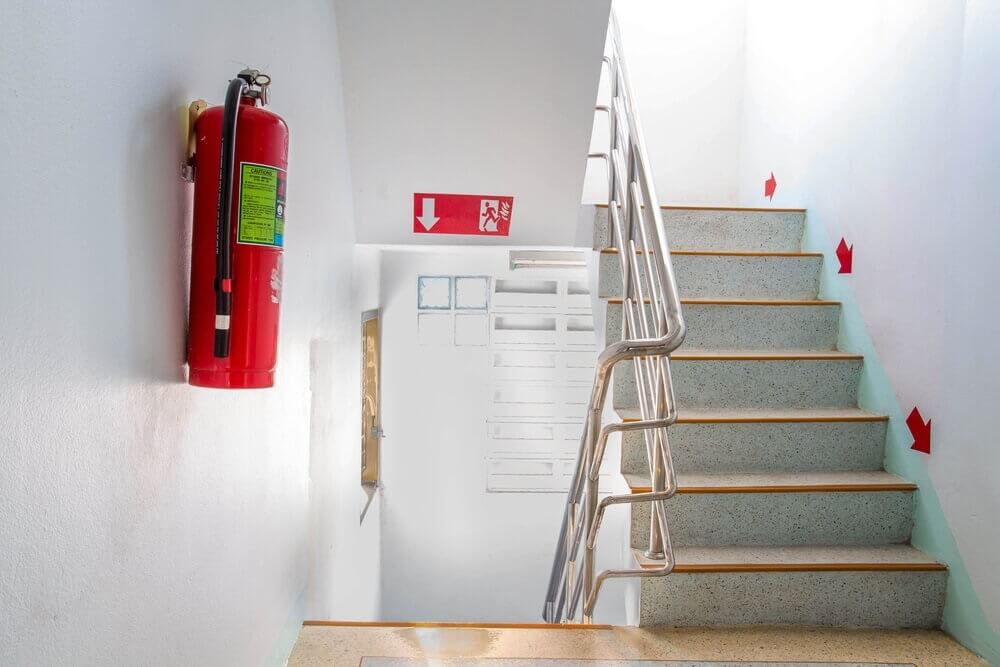
Vertical evacuation is the preferred method of escaping a fire through stairways. It’s for those above the ground floor who can take the stairs to exit the building with or without help. However, people with physical disabilities can’t evacuate vertically. Thus, they should be housed on the ground floor, if possible.
Horizontal evacuation is one of the commonly used categories of fire evacuation. It takes people away from a dangerous area to a safer place on the same floor. Large buildings, hospitals, or care home use this method. It’s required when people can’t use the stairways and have to wait for help. Yet, you may follow both vertical and horizontal evacuation procedures based on the size and style of your building.
2. Full Evacuation
A full evacuation is necessary when the fire alarm triggers or the Emergency Action Team declares a fire event to be risky. Along with the fire alarm, full evacuation can be communicated through the PA system (Public Address System) or text alert.
Full evacuation is mandatory if the fire spreads quickly and becomes unmanageable. In such situations, people should get out quickly when the alarm sounds.
3. Simultaneous Evacuation
Simultaneous evacuation is the most used of all categories of fire evacuation. It’s where the building residents react to a fire alarm and leave together to a safe location outside the building.
Building authorities must fully understand the process of evacuation to ensure everyone’s safety. For example, businesses can install a full building fire detection and alarm system to alert all workers during a fire emergency. But, most purpose-built blocks of flats don’t have the systems. That’s because they often create false alarms and cause property damage.
What Should I Include in a Fire Evacuation Plan?
A fire is a risk in every building. When it starts, everyone is in danger, from family members and employees to security and animals. The deadly smoke can fill your home in seconds. But, a proper fire evacuation plan can limit the damage caused by smoke or fire. It contains primary and secondary exits and escape routes to escape danger as quickly as possible.
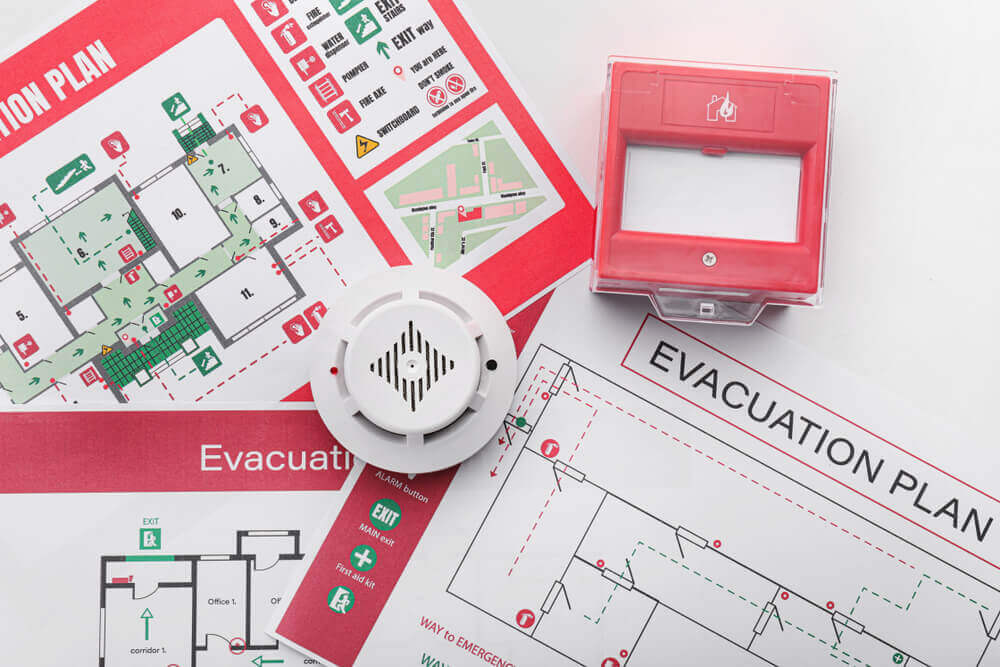
See what you should include in your fire evacuation plan:
Assign Roles and Responsibilities to All Groups
During a fire breakout, chaos and crowd injuries may occur. People might not understand what to do and who is responsible for controlling an emergency evacuation. But all individuals should take part in promoting fire prevention. So, everyone must be aware of the categories of fire evacuation and the procedures to be followed.
Alarm and Alert Systems
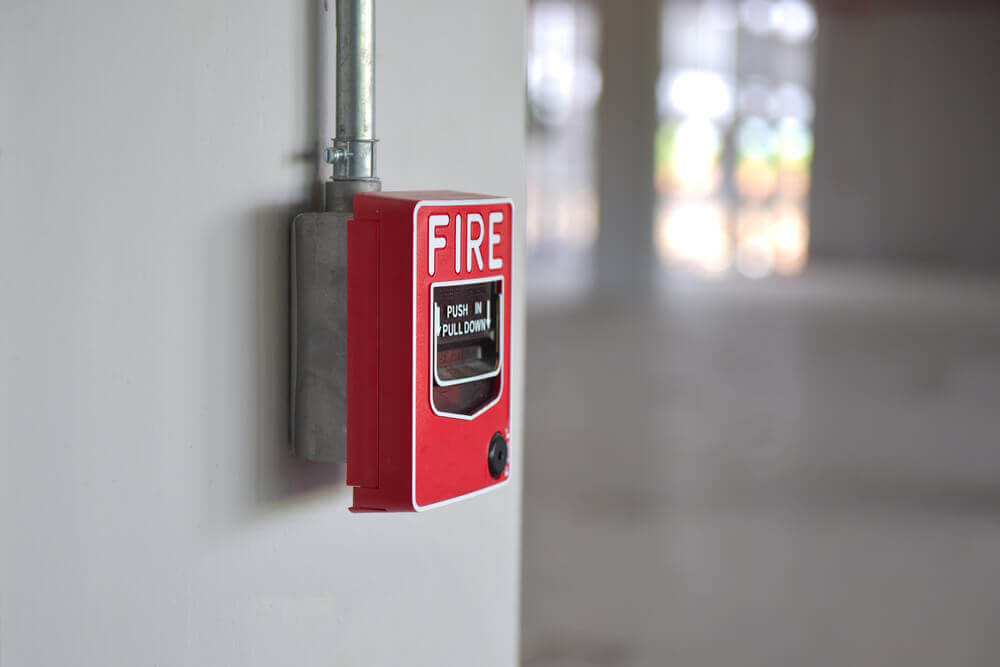
It’s important to notify everyone when a disaster strikes. For example, a well-installed and maintained fire alarm system can warn everyone of a deadly fire. It can also reduce the risks a fire can cause.
Routes and Methods for Evacuation
Your workplace fire evacuation protocols must include how and when people should evacuate. Also, it must include where to evacuate. So, having a departure route and designated meeting point in evacuation is good.
Furthermore, post your emergency evacuation plans and maps in conspicuous areas within buildings. For example, you can post them on exit doors and elevators. It will remind everyone of the escape route in a fire emergency scenario.
The Appropriate Sign
Along with your evacuation plans and maps, you must mention various fire safety signs. These indicate actions that must be performed during an emergency. So, you can mark the escape routes. Also, you can provide signage to identify different fire-fighting equipment.
Appropriate Firefighting Equipment
Some essential fire equipment must be accessible to all. For instance, fire extinguishers, fire hose reels, and fire blankets. Staff and other building occupants should get hands-on training in fire extinguishing equipment. It’s also essential to use the correct extinguisher for each type of fire and maintain them the right way.
Fire Drills and Alarm Testing
Every building occupant should stay prepared for an emergency. A fire drill is an emergency simulation of evacuation. It outlines the various processes to leave a building in case of a fire breakout.
The purpose of alarm testing is to ensure they are in good working order. It also makes everyone aware of the alarm sound.
The Dos and Don’ts of Fire Evacuation
During a fire, you might not understand what to do, what not to do and how to do it right. You may also forget what you’ve learned about fire emergency procedures. But making fire safety a top priority in your workplace can help you act wisely and minimise the damage.
Here’s a list of dos and don’ts to tell you what to do when a fire alarm goes off.
Do: React Quickly.
Every second is precious, especially when a disaster strikes. Therefore, there’s no chance of wasting time. Once you hear the fire alarm, you must leave your seat and rush to the nearest accessible exit. Help others escape along the way, exit the building and reach the evacuation assembly point.
Do: Practice Fire Evacuation Procedures Regularly.
Preparing workers for disasters is essential. It ensures their safety and keeps the company compliant with OSHA regulations. Also, practising evacuation procedures will help workers permanently remember the process. It will help them act immediately during a fire breakout instead of separating into different building areas. They can recall their pre-planned escape route to get everyone out as soon as possible. Families should also practice fire evacuation plans a few times a year.
Do: Have a Designated Fire Warden or Fire Marshal.
Every workplace should have a designated fire marshal or fire warden. They prepare businesses for a fire emergency. They evacuate all workplace occupants and ensure all escape routes are clear. They also take charge of implementing a business fire safety plan. It ensures everyone’s aware of the evacuation procedures.
Do: Create PEEPs for Vulnerable Individuals.
Most vulnerable or disabled people can’t evacuate a building through emergency routes. Sometimes, they may not hear the fire alarm or may need extra help in evacuating. So, a PEEP (Personal Emergency Evacuation Plan) is used to document how these individuals can evacuate safely during a fire event.
Do: Have a Clear Assembly Point.
An assembly point is where all workplace or building occupants go if there’s an emergency. So, every building must have a well-planned assembly point. It will help all occupants can gather during a fire. But, the location must be positioned a safe distance away from the building. For instance, a distance equal to twice the height of the building.
Don’t: Ignore a Fire Alarm.
Everyone must evacuate the building right after they hear the alarm. But, people sometimes don’t heed the threat to their safety. False alarms can be one of the reasons people get unconcerned and ignore the signal. Whatever the reason is, a fire alarm must not be overlooked as it can be costly to your life.
Don’t: Leave Fire Doors Open.
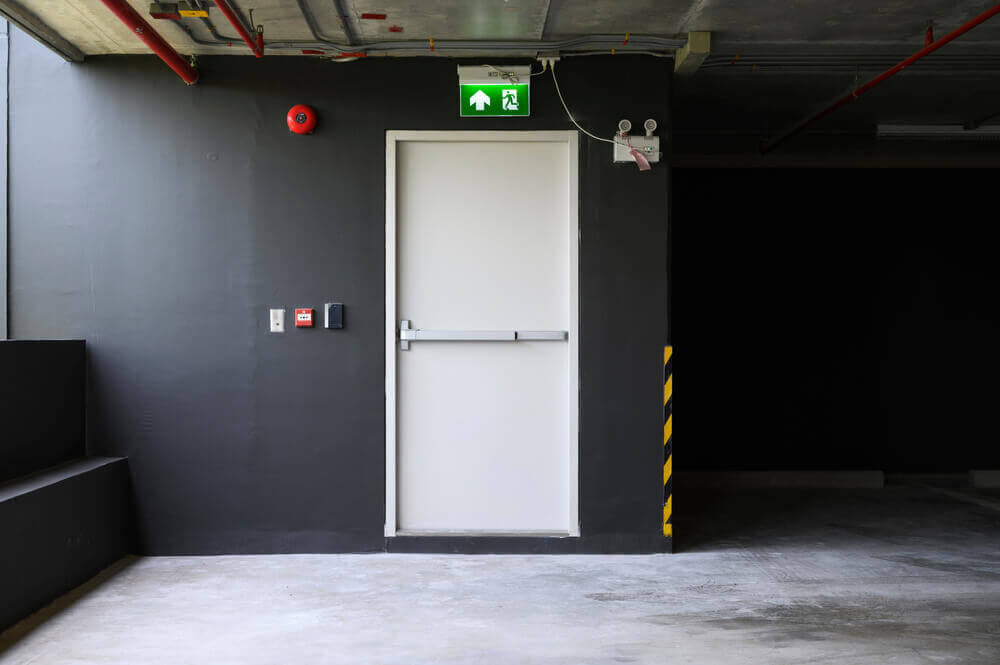
Fire spreads fast. And when the fire door is open in the event of a fire, the whole process of fire prevention is compromised. As a result, fire doors should remain closed in case of a fire. In fact, a fire door should always be closed unless it provides general access to a building. Therefore, it’s essential to check the fire doors of your facility regularly to ensure they remain functionally ready.
Don’t: Block Fire Escape Routes.
You should not block a fire escape route or make it inaccessible in a fire emergency. A blocked route can create confusion during a fire breakout. Also, it can constitute severe fire and life safety hazards. So, it’s vital to keep doorways and exits free from obstruction and clutter to direct people to the nearest, safest location. Besides, avoid using sliding or revolving doors for emergency exits.
Don’t: Return to a Building That is on Fire.
You may evacuate a building during a fire incident, leaving your valuables behind. But, whatever the reason is, you should never re-enter the facility unless the fire department or public safety officer confirms it’s safe to do so. Because if you re-enter a burning house, there is no guarantee you can find your way out of the building again.
Creating a Fire Safety Evacuation Plan for Your Business
Every workplace can have fire hazards. Without a fire evacuation plan, workplace occupants can be trapped in the building and lose lives during a fire incident. An evacuation plan is a set of procedures that ensure safe evacuations.
Your evacuation plan must show that you have the following:
- An overall fire evacuation strategy
- Alerting and alarm systems
- Evacuation routes and procedures
- Appropriate signage
- Appropriate firefighting equipment
- Delegation of responsibilities to appropriately trained personnel
- Practices with fire drills and alarm testing
- Business continuity measures in place
What to Include in a Fire Safety Evacuation Plan for Business?
A fire safety evacuation plan includes information about fire safety. In addition, it outlines the steps to be taken by all occupants in a fire event.
See what you should include in your business’s fire safety evacuation plan.
- A suitable fire detection system.
- A process for identifying false alarms.
- A thorough understanding of who calls 999
- A clear pathway to every emergency exit
- Clearly marked emergency exits that are as short and direct as possible
- Enough exits and ways for everyone to escape
- Functional emergency doors
- Emergency lighting
- Emergency evacuation safety training for all employees
- A safe meeting point for building occupants
- Procedures for roll call
Fire Evacuation in Hospital Buildings
At hospitals, many patients can’t use the emergency exits to evacuate. It’s essential to move them from the danger area to a safer place, often on the same floor. Hence, among the various categories of fire evacuation, hospitals use the horizontal evacuation method. But, vertical evacuation is also used when patients need to be moved to another floor.
General Patient Evacuation Guidelines
Here are a few general patient evacuation guidelines in case of fire –
- Patients should be evacuated horizontally from the threatened area to a safer location during a fire incident.
- They can be moved by a wheelchair, stretcher or any other means of transport.
- Patients in the immediate threatened area should be moved first.
- Ambulatory patients shall be directed to an adjacent smoke compartment.
- Non-ambulatory patients should be moved with a stretcher or wheelchair.
- Patients on the critical list should be kept in a closed room until they can be moved safely.
- Nursing facilities should be available to meet patient needs when they are taken to another location.
Tips for Fire Evacuation
Fire can be life-threatening. But an effective evacuation plan can let people gain some control over the situation. Take the following steps to reduce the impact of emergencies that fires can cause.
- Complete the internal departmental or class procedures essential to an emergency evacuation.
- Everyone responsible for fire safety must ensure a fire area is completely evacuated. Moreover, helping those with physical disabilities should be a top priority.
- Follow the exit routes and exit doors for a safe escape. Take the stairs instead of the elevators. Also, avoid specific footwear, such as slippers, as you must flee quickly.
- Walk briskly instead of running. Also, stay on the right to let emergency response personnel clear access up the stairs along the left.
- Let everyone enter the stairwell. As you reach the landing of each floor, let evacuees from that level enter the stairwell.
- Maintain a safe distance from the danger area and try to escape through the nearest exit route.
- As soon as you exit the facility, move at least 150ft away from the building to a secure location. You must reach your Evacuation Assembly Area.
- Refrain from re-entering the building without an “all clear” notification. You can only enter that area with permission from fire department personnel. You should also wait until a recognised authority declares the “all clear” message.
When to Call the Fire Brigade?
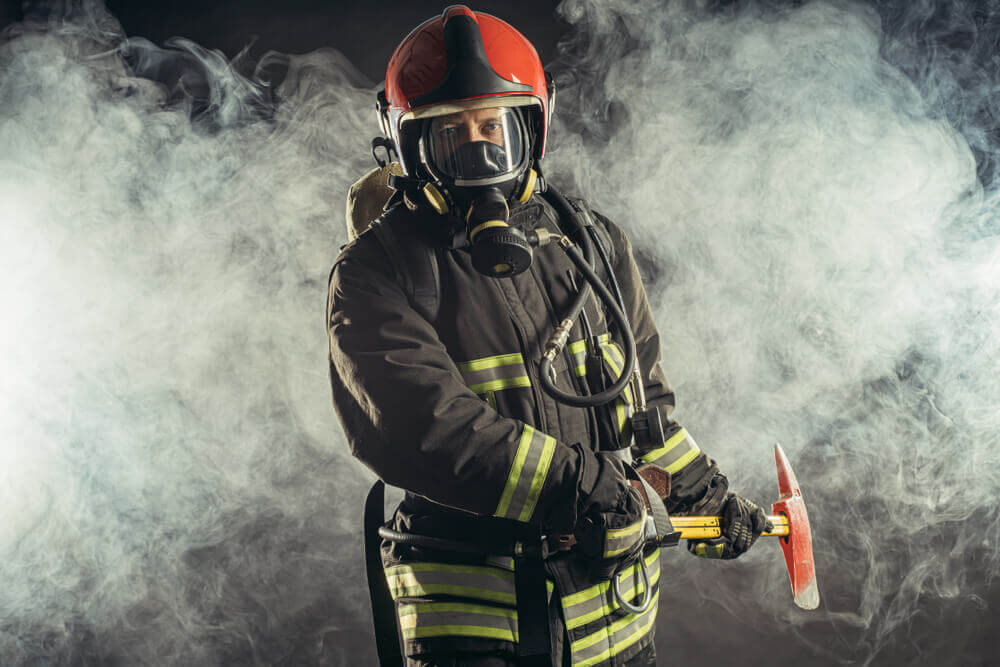
When the fire situation is life-threatening and time is limited, contacting fire services is the only way to escape danger. On another note, no matter how small the fire is, getting fire services is a wise step because it takes no time for small fires to spread into large fires.
Conclusion
Fires are unpredictable and can prove deadly. As a result, it’s essential to have a plan of action in case of disaster. However, different circumstances need different categories of fire evacuation. The right evacuation plan will help everyone react immediately during a fire event and reduce the vast damages it can cause.
FAQ
What’s the Best Fire Evacuation Strategy?
The one that suits your business needs is the best fire evacuation strategy. Even though there are different categories of fire evacuation, you have to decide what to include in your fire evacuation plan. For instance, a vertical or horizontal evacuation plan won’t be appropriate if you have a small office with a few employees. Likewise, simultaneous evacuation won’t be suitable for large buildings, such as hospitals or care homes.
What is the Correct Order of Evacuation?
Ensuring fire safety is essential to reduce any injuries or building damage a fire can cause. Thus, businesses must implement fire prevention measures, such as an evacuation plan. It will help prevent extended evacuation times and loss of lives and property.
Here are the 3 stages of evacuation in a fire for a solid evacuation plan:
- Stage 1: Immediate evacuation
- Stage 2: Lateral evacuation
- Stage 3: Partial evacuation.
What are My Duties as a Responsible Person?
A responsible person is in charge of the fire safety of the building. For instance, a business owner, employer or occupier.
As the person in charge, you must take reasonable steps to ensure that everyone on the premises can escape safely during a fire event. For instance, you can conduct a fire risk assessment of the premises. Then, you can review it regularly and maintain preventive measures. The risk assessment should identify the potential hazards and the people at risk.
What is Defend in Place?
It’s a fire evacuation strategy used in healthcare. It’s used for disabled people who can’t leave the facility independently.
What is Stay Put?
It’s an evacuation strategy used in purpose-built blocks of flats. It’s used to keep people safe from a fire outbreak when they are not in an area directly affected by a fire. For instance, people must close their doors and windows during a fire in another flat or communal area.
What is Silent Alarm Evacuation?
Silent alarm evacuation is a procedure that most people are unaware of. It’s only understood by staff or people working in a place that uses such evacuation methods. It helps them assume that an emergency is happening and take necessary actions.
In large locations, such as shopping malls, theatres and care homes, sounding a fire alarm can create mass panic and distress. Single exits can get congested, and stairways can become overcrowded. These can lead to more trips and falls and major fire-related injuries. In such scenarios, a silent evacuation is a suitable option. It helps evacuate people without drawing much attention to the process.
Silent alarms can also be used during a terrorist attack. As the evacuation process requires the least attention, it’s easier to evacuate victims to a safer location silently.
Dangers are of many types. So, different levels of risk need specific silent alarms. For example, lights flashing, discrete sounds, individual messages or coded announcements. Each of these will have separate procedures for evacuation associated. So staff can act in the safest possible way to rescue those in danger.
What does PEEP Stand for in Fire Safety?
PEEP stands for Personal Emergency Evacuation Plan. It contains information about the necessary escape routes to reach a safer location during a fire breakout. It’s a plan for those who need assistance evacuating, such as people with impaired mobility.
Who are Fire Wardens/Marshals?
Fire wardens/marshals perform supportive fire safety roles. They implement necessary fire safety arrangements to ensure a business is ready for emergencies.
What are the Duties and Responsibilities of Fire Wardens/Marshals?
All businesses should stay prepared for a fire emergency. Fire wardens are professionals who play vital roles in emergency preparation. Organisations hire them to manage fire safety. They also train staff on the categories of fire evacuation to get people out of the building.
Learn More
- Available Courses
- Career Bundles73
- Animal care5
- Law8
- Quality Licence Scheme Endorsed111
- Teaching13
- Teaching & Academics Primary27
- Accounting & Finance Primary30
- Training3
- Design9
- IT & Software44
- Healthcare126
- Marketing31
- Health and Safety402
- Construction48
- Electronics25
- Hospitality22
- Health and Social Care219
- Child Psychology37
- Management377
- Business Skills268
- First Aid70
- Employability264
- Safeguarding75
- Food Hygiene103
- Personal Development1277
 Food Hygiene
Food Hygiene Health & Safety
Health & Safety Safeguarding
Safeguarding First Aid
First Aid Business Skills
Business Skills Personal Development
Personal Development












